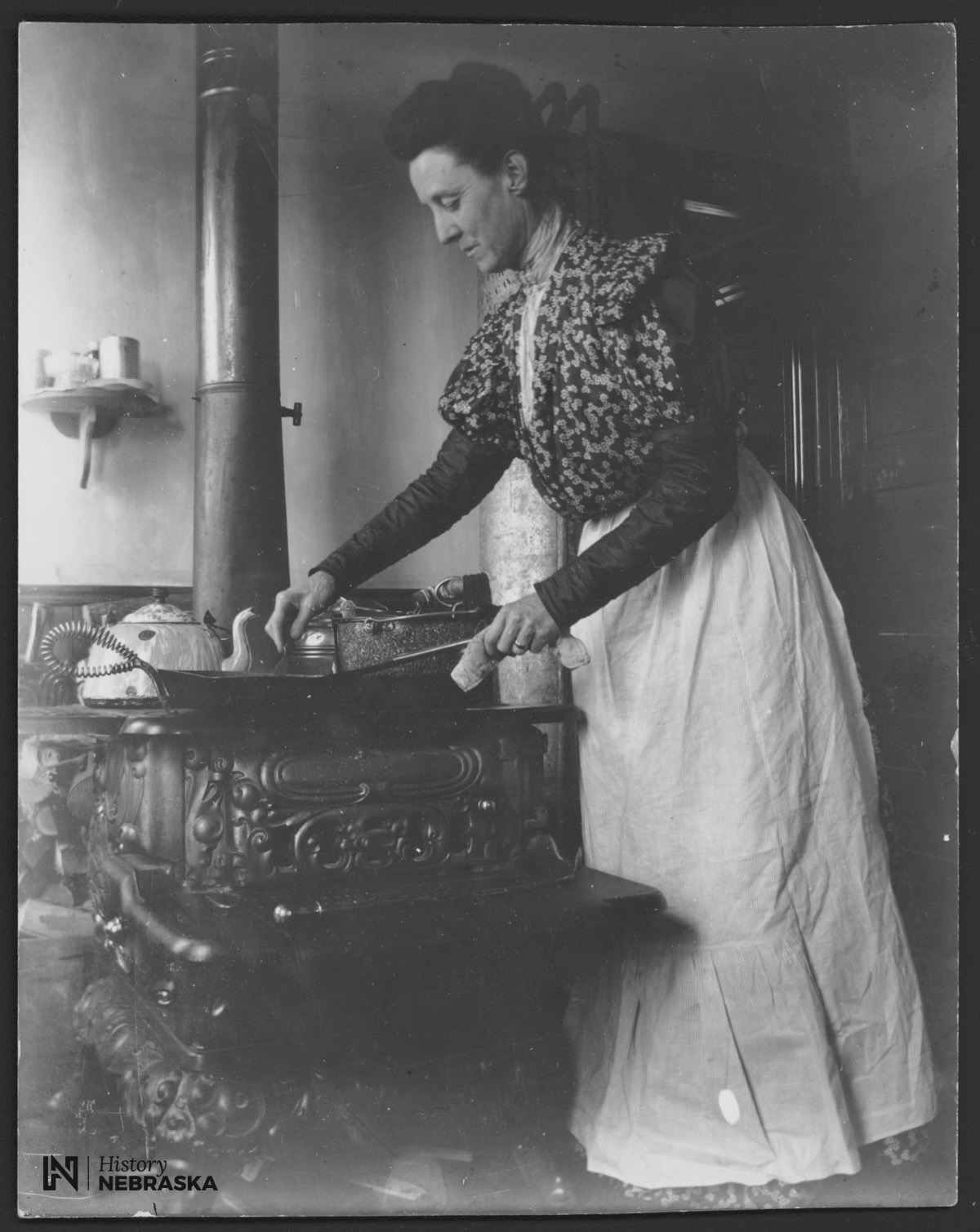Did you ever wish you could step into a time machine and return to 1914, just over one hundred years ago, to join the celebration of Thanksgiving? What might the holiday meal consist of? How easy would it be for a housewife to secure everything she needed? The Omaha Daily Bee on November 25, 1914, published a sample Thanksgiving menu, followed by information on the local cost and availability of the various food items: grapefruit, salted pecans, olives, celery, sweet pickled peaches, scalloped oysters, ladyfinger rolls, roast turkey, chestnut stuffing, giblet sauce, cranberry sherbet, sweet potatoes and marshmallows, celery and pineapple salad, pumpkin pie with whipped cream, nuts, raisins, and “half cups of coffee.” The Bee advised its readers that frozen turkeys were plentiful and reasonable in price for the Thanksgiving of 1914 but that ducks and geese were scarce. Even chicken was selling for a higher price than had prevailed before the holiday due to increasing demand. The Bee surmised that some frugal housewives were trying to substitute it for the more expensive turkey.

Ella Kinscella at her kitchen stove in Lincoln about 1910. RG2602-4

Turkeys, geese, ducks, chickens, and oysters were offered Thanksgiving shoppers in Kearney in 1914. Kearney Daily Hub, November 20, 1914
The Bee noted one particularly scarce item in 1914. “For the person who loves pumpkin pie comes the information that no pumpkins are to be had. A few were on the market about Hallowe’en, but they have disappeared since then. Canned pumpkin is all that can be procured and, while some prefer it many dyed-ln-the-wool pumpkin pie eaters will be disappointed.” One food that appears especially underpriced to current Thanksgiving shoppers is the oyster. In a time when fresh oysters were more popular, more plentiful, and less expensive than they are now, no holiday table was complete without them in some form: on the half shell, scalloped, or in oyster stew and oyster stuffing. They were advertised by several Omaha groceries in November of 1914 for forty cents per quart, enabling most families to enjoy them along with their turkey or chicken and trimmings.



